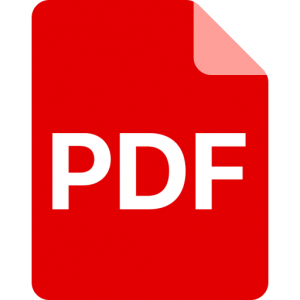بررسی عوامل موثر بر استقرار مدیریت دانش
توجه : این پروژه به صورت فایل PDF (پی دی اف) ارائه میگردد
بررسی عوامل موثر بر استقرار مدیریت دانش دارای ۱۴۳ صفحه می باشد و دارای تنظیمات و فهرست کامل در PDF می باشد و آماده پرینت یا چاپ است
فایل پی دی اف بررسی عوامل موثر بر استقرار مدیریت دانش کاملا فرمت بندی و تنظیم شده در استاندارد دانشگاه و مراکز دولتی می باشد.
Factors Affecting knowledge Management In The
Confirmation Of Housing And Urbanization
Organization
(Case Study: Selected Provinces Of West)
منابع لاتین
۱- Aggestam,Lena,(2006), ” Learning Organization Or Knowledge Management–which
came first,The Chicken or The Egg? ” ,Information Technology And Control,Vol.35,
No.3A,Pages 295-302
۲- Alavi,Maryam & Leidner,Dorothy,(2001), ” Review: Knowledge Management and
Knowledge Management Systems: Conceptual Foundations and Research Issues”, MIS
Quarterly, Vol. 25,No.1,Pages 107-136.
۳- Borghoff,Uwe & Pareschi, Remo,(1997), ” Information Technology for Knowledge
Management”,Journal of Universal Computer Science, Vol.3, No.8,Pages 835-842
۴- Chen,Chung-Jen & Huang,Jing-Wen,(2007),” How organizational climate and structure
affect knowledge management—The social interaction perspective”,International Journal
of Information Management,Vol. 27, Pages 104–118
۵- Choy,Chong Siong,(2006),”Critical Success Factors to Knowledge Management
Implementation: A Holistic Approach”,Faculty of Business and Law Multimedia
University,Jalan Ayer Keroh Lama
۶- Chuang,Shu-Hui,(2004),” A resource-based perspective on knowledge management
capability and competitive advantage: an empirical investigation”,Expert Systems with
Applications,Vol. 27,Pages 459–465
۷- Dave,Bhargav & Koskela,Lauri,(2009), ” Collaborative knowledge management- A
construction case study” ,Automation in Construction, Vol.18,Pages 894–902
۸- Denison,Daniel & Janovics,Jay & Young,Joana & Cho,Hee Jae, (2006), “Diagnosing
Organizational Cultures: Validating a Model and Method” Working paper,International
Institute for Management Development , Lausanne, Switzerland
۹- Fahey,Liam & Prusak,Laurence,(1998), ” The Eleven Deadliest Sins of knowledge
management” ,California Management Review, Vol.40, NO.3, Pages 265-276
۱۰- Hartini,Ahmad & Normala,Sharom, & Che Sobry,Abdullah,(2006), ” Knowledge Sharing
Behaviour in the Public Sector: the Business Process Management Perspectives”,
Knowledge Management International Conference And Exhiition
۱۱- Hsieh,Ping Jung & Lin,Binshan & Lin,Chinho,(2009), ” The construction and application
of knowledge navigator model (KNMTM): An evaluation of knowledge management
maturity” ,Expert Systems with Applications, Vol.36, Pages 4087–4100
۱۲- Jorna,René,(2001), ” Knowledge Type and organizational Forms in Knowledge
Management”ISMICK
۱۳- Ke,Weiling & Kee Wei,Kwok,(2008)” Organizational culture and leadership in ERP
implementation”, Decision Support Systems, Vol.45, Pages 208–218
۱۴- Kerjcie,Robert & Morgan,Daryle,(1970),”Determining Sample Size for research
activities”,Educational and psychological Measurement, Vol.30, Pages 607-610
۱۵- Khalifa,Mohamed & Liu,Vanessa,(2003), ” Determinants of Successful Knowledge
Management Programs ” Electronic Journal on Knowledge Management,Vol.1, Issue2,
Pages 103-112
۱۶- long,David & Fahey,Liam,(2000), ” Diagnosing cultural barriers to knowledge
management” ,Academy ot Management Executive, Vol.14, No.4,Pages 113-127
۱۷- Lin,Wen-Bao,(2008), ” The effect of knowledge sharing model ” ,Expert Systems with
Applications,Vol. 34,Pages 1508–1521
۱۸- Linnenluecke,Martina & Griffiths,Andrew,(2009), ” Corporate sustainablity and
organizational culture” ,Journal of World Business, Vol.393,Pages 1-10
۱۹- Malhotra,Arvind & Majchrzak,Ann,(2004),” Enabling knowledge creation in far-flung
teams:best practices for IT support and knowledge sharing”, Journal Of Knowledge
Management,Vol.8,No.4,Pages 75-88
۲۰- Manus,Damien & Loughridge,Brendan, (2002), “Corporate information, institutional
culture and knowledge management: a UK university library perspective,”Journal
information,Vol.103, No.9, Pages 320-327
۲۱- Massa,Silvia & Testa,Stefania,(2009),”A knowledge management approach to
organizational competitive advantage: Evidence from the food secto” , European
Management Journal, Vol.27, Pages 129– 141
۲۲- Metaxiotis,Kostas & Ergazakis,Kostas & Psarras,John, (2005), “Exploring the world of
knowledge management: agreements and disagreements in the academic/practitioner
community”,Journal Of Knowledge Management, Vol. 9, No. 2,Pages 6-18
۲۳- Ngah,Rohana & Hoo,Chua Hock & Ibrahim,Abdul Razak,(2009), ” The Relationship
between Knowledge Management and Trust: Malaysian Perspective”, International
Journal of Management Innovation Systems, Vol. 1, No.1,Pages 1-11
۲۴- Real,Juan & Leal,Antonio & Rolda´n,Jose´,(2006), ” Information technology as a
determinant of organizational learning and technological distinctive competencies”,
Industrial Marketing Management,Vol. 35, Pages 505 – 521
۲۵- Ross,Ron & Katzke,Stu & Johnson,Arnold & Swanson,Marianne & Stoneburner, Gary,
(۲۰۰۸), ” Managing Risk from Information Systems An Organizational Perspective”,
National Institute of Standards and Technolog, Special Publication,Vol.67,Pages800-39
۲۶- Sher,Peter & Lee,Vivid, (2004),”Information technology as a facilitator for enhancing
dynamic capabilities through knowledge management”, Information & Management,
Vol.41,Pages 933–945
۲۷- Sivan,Yesha, (2001),” Nine Keys to a Knowledge Infrastructure: A Proposed Analytic
Framework for Organizational Knowledge Management” Information Resources Policy,
Harvard University, Maxwell Dworkin 125, 33 Oxford Street, Cambridge MA 02138.
VOL. 617,Pages 495-4114
۲۸- Tseng,Shu-Mei,(2008),”The effects of information technology on knowledge management
systems”,Expert Systems with Applications, Vol.35, Pages 150–160
۲۹- Tserng,Ping & Lin,Cheng,(2004),” Developing an activity-based knowledge management
system for contractors”Automation in Construction,Vol.13,Pages 781– 802
۳۰- Tserng,Ping & Yin,Samuel & Dzeng,R.J. & Wou,B & Tsai,M.D & Chen,W.Y, (2009),” A
study of ontology-based risk management framework of construction projects through
project life cycle”,Automation in Construction,Vol.18,Pages 994–1008
۳۱- Wong,Kuan Yew,(2005), ” Critical success factors for implementing knowledge
management in small and medium enterprises” ,Industrial Management & Data Systems,
Vol. 105, No. 3, pages 261-279
۳۲- Xueqing,Zhang & Xiaoming,Mao & Simaan,M.Abou Rizk,(2009),” Developing a
khowledge management system for improved value engineering practices in the
construction industry”,Automation in construction, Vol. 18,Pages 777-789
۳۳- Yang,Jyh-Bin,(2007),” Developing a knowledge map for construction scheduling using a
novel approach” ,Automation in Construction, Vol.16, Pages 806–815
۳۴- Zheng,Wei & Yang,Baiyin & McLean, Gary,(2010), ” Linking organizational culture,
structure, strategy, and organizational effectiveness: Mediating role of knowledge
management” ,Journal of Business Research, Vol.63, Pages 763–771

- در صورتی که به هر دلیلی موفق به دانلود فایل مورد نظر نشدید با ما تماس بگیرید.
 دانش رسان |
مرکز علم و دانش کشور
دانش رسان |
مرکز علم و دانش کشور 

